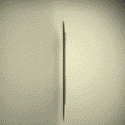
Cinematographer Alice Brooks discusses using DXL2 and G Series anamorphics to craft a big look for director Jon M. Chu’s musical In the Heights.
In 2002, when cinematographer Alice Brooks and director Jon M. Chu were still film students at the University of Southern California, they partnered for the short When the Kids Are Away, a musical about how a group of neighborhood moms spend their day after sending their children to school. During that collaboration, Chu interviewed Brooks on camera about the project, asking her why she wanted to shoot the short.
As Brooks tells it, “I said, ‘I’ve always loved musicals. My mom was an actor, dancer and singer, my dad was a theater director and a playwright, and I grew up going to theater. When you handed me your script for a musical, I knew I had to do this.’ We bonded over our love of musicals.”
In the years since, music and dance have remained central to their creative collaboration as they’ve reteamed for such projects as the web series The LXD: The Legion of Extraordinary Dancers, the feature Jem and the Holograms, and now the musical In the Heights. “In the middle of doing In the Heights,” Brooks recalls, “Jon said to me, ‘We have been preparing our entire careers for this moment.’”

Based on the stage musical featuring music and lyrics by Lin-Manuel Miranda and a script by Quiara Alegría Hudes, In the Heights offers a rich portrait of the characters who inhabit the Washington Heights neighborhood in New York City. Now playing in theaters and streaming on HBO Max, In the Heights was originally slated for release in June 2020, but the pandemic delayed its opening by a year. “This is the perfect moment for this movie to come out,” Brooks offers. “It was always intended to be a huge theatrical experience, but even in places where people might not be able to go to the movie theater yet, it can give a sense of hope and a reminder of what community is.”
The movie’s release marks the culmination of a five-year journey for Brooks. “I knew Jon was attached to In the Heights back in 2016,” she says. “He mentioned it a few times in passing, and in the back of my head, I was thinking, ‘I have to shoot this movie.’ So, without telling him, I started keeping a file of images that I thought might be interesting.”

Then, in late 2018, Brooks and Chu partnered for the first two episodes of the Apple TV+ series Home Before Dark. (Brooks would also shoot episodes 5 and 6.) The night Chu arrived in Vancouver, he and Brooks met for dinner, and Chu asked her to shoot In the Heights. “We went through his initial pitch for the movie, and for the look and feel of the story he wanted to tell, and why it was important for him specifically to make this movie,” Brooks reflects. “Jon always has such a deep connection to the material, and he felt he needed to tell the story of In the Heights.”
ALSO READ: MORE ‘BEHIND THE SCENES’
Production designer Nelson Coates and editor Myron Kerstein — both of whom had previously worked with Chu on the feature Crazy Rich Asians — along with costume designer Mitchell Travers also went from Home Before Dark to In the Heights. Additionally, the feature reunited Brooks and Chu with choreographer Christopher Scott, who had been a key collaborator on both The LXD and Jem and the Holograms. Brooks notes that she, Chu and Scott “have this great shorthand with each other. We figured out how to capture dance in a really organic way on The LXD, which was a challenging series, but it totally prepared us for In the Heights.”


Finding Inspiration on Location
During Brooks’ 10 weeks of prep for In the Heights, she says, “We knew very quickly we needed to make the movie in Washington Heights. Immersing ourselves in the neighborhood was such an inspiration. I needed my crew to be part of that, too, so over the course of two days, gaffer Charlie Grubbs, key grip Kevin Lowry, A and B operators Mark Schmidt and Peter Agliata, and I all went up to Washington Heights, and I showed them all the key locations. I wanted them to have ownership and feel part of the process early on. Also, this was my first union movie in New York, so that time together gave us a chance to get to know one another. I’m so grateful to the line producer, David Nicksay, and UPM Maggie Engelhardt for giving us that time long before the crew’s prep started.”

Meanwhile, Brooks and Chu compared the visual references they’d each been collecting in preparation for In the Heights. “I consciously made a choice not to watch any musicals,” the cinematographer notes. “We both already have a huge musical encyclopedia in our brains. We didn’t want to mimic anything else or do something just because it was on trend. But we did want to make a classic New York movie, so that’s what I ended up looking at — movies like Do the Right Thing, Moonstruck, Searching for Bobby Fischer. But really, more than another movie or a photograph, it was the community that inspired the look of the movie. We started collecting images from local photographers — some of those photographers’ work can be seen as part of the end credits.
“It was great that Nelson, Mitchell and I had all done Home Before Dark together, because we very quickly understood the aesthetic of the movie,” Brooks says. After working with Panavision’s Millennium DXL2 camera on Home Before Dark, Brooks elected to use the camera again to shoot In the Heights, further streamlining her collaboration with Coates and Travers. “We all knew the camera and understood how the colors were going to render,” the cinematographer explains. “The DXL2 was amazing.”
After testing, Brooks opted to pair the camera with Panavision G Series anamorphic lenses. “This movie is a celebration of Washington Heights and of immigrants,” she reflects. “Jon said, ‘These are people with big dreams,’ and he wanted the movie to feel as big as possible. In the movie, Abuela Claudia [Olga Merediz] talks about ‘little details that tell the world we are not invisible.’ The details we picked, like anamorphic and shooting widescreen, were about saying, ‘This is a big movie about people with big dreams.’

“Jon also really wanted a shallow depth of field,” Brooks continues. “The depth of field on that sensor size, with anamorphics and shooting close to wide open, gave us the intimacy that we were looking for. Especially with our close-ups on Usnavi [Anthony Ramos] — there’s so much soul in his eyes, and I loved that our plane of focus could just be right there.”
Lens flares were also an important consideration for the filmmakers, providing an optical “imperfection” that helped ground the story. “It’s a messy world, and we wanted those imperfections to be part of the look of the movie,” the cinematographer explains, adding that “one of the reasons that I picked the DXL2 for this project was the way it renders flares.”

The combination of DXL2’s 5-micron pixel pitch and 16-bit color allow for the smooth rendering of flares’ subtle gradations. As a result, the cinematographer says, “Flares have a different quality on that camera that instinctually felt right. The combination of the G Series lenses with the DXL2 gave the flares the shape we wanted. Then it was about not using filtration, rarely using hard mattes, and keeping the matte box off the camera as much as possible.”
Brooks worked at DXL2’s native 1600 ISO to make the most of the camera’s 16 stops of dynamic range. She also opted to window the sensor in-camera for 7K capture. Taking into account the 2x anamorphic squeeze, the actual resolution was then 4536×3780, which allowed the filmmakers to employ a 90.3-percent safety frame line — to accommodate any reframing or stabilization that might later be necessary — while still ensuring a 4K final resolution (4096×3413).
Brooks sourced the production’s camera and lens package through Panavision New York. “Panavision has always been a huge champion of me, and I’m forever grateful for that,” she shares. “Even going back to When the Kids Are Away, Jon wrote a letter asking if we could use one of the first Panavised Sony F900s, and they said yes. That’s what we ended up shooting that short on. It’s a really special relationship.”

The Dance Between Camera and Actors
There are 17 musical numbers in the movie, making up about 60 percent of the total runtime, Brooks estimates. “Some of them aren’t big dance numbers, but there was still singing and choreographed movement,” she says. “Jon had such a big vision for this movie. Each number had its own huge challenges for us to overcome.”
As an example, she points to the opening number, appropriately titled “In the Heights,” which was shot “all over the place, in so many locations, over a huge course of time,” she explains. “The first thing I started looking at in dance rehearsal was the staging of the interior of the bodega, where we introduce each of our characters. It’s mostly actions that have to take place on very specific lines, like a newspaper slapping a shoulder, or sugar and cream being poured into coffee. It was choreography, it just wasn’t necessarily dance.”

That bodega, owned and operated by Usnavi and frequented by everyone in the neighborhood, was one of the few sets constructed onstage. “We were only onstage for 10 days, and those were the last 10 days of our shoot,” Brooks says. In approaching the bodega set’s lighting, she adds, “I was inspired by the real light in the neighborhood that we had for the song ‘Benny’s Dispatch.’”
In that number, Nina (Leslie Grace) drops by her father’s car service, where Benny (Corey Hawkins) is operating the dispatch radio. The song was shot in a real office with a glass front looking out to the street. “I loved how the hard sunlight would hit cars as they passed, and every once in a while it would give us a little anamorphic flare,” Brooks notes. “That became our bible for what it should look like outside the windows of the bodega.”

Over the course of the song “96,000,” everyone from the neighborhood gathers in and around the two massive outdoor swimming pools at Washington Heights’ Highbridge Park as they wait to hear the numbers of a winning lottery ticket that was sold at the bodega. The filmmakers wanted to include high-angle shots looking straight down over the pools, but local ordinances prevented them from flying a drone. They also considered a cable-cam system, but, Brooks notes, “there was no good place to rig it.”
Instead, they opted for a crane, which required careful coordination with New York City Parks Department engineers given that the pools are situated above a subterranean tunnel system. “We ended up with the biggest crane we could get that didn’t exceed the weight limitation of the deck,” Brooks explains. “We shot spherical [with Panaspeed primes] for those shots so we could use the DXL2’s full 8K sensor.”

All of the movie’s dance numbers called for a close collaboration between Scott’s choreography team and the camera operators. “Music is so specific,” Brooks says, “so sometimes I would ask a choreographer to stand near the operator and count them into the shot, which was incredibly helpful.”
The song “Champagne” proved to be a particular showcase for the dance between camera and actors, as Vanessa [Melissa Barrera] and Usnavi move through Abuela Claudia’s empty apartment in a long, unbroken take. The practical apartment “was only about 15 feet wide by 40 feet long, with a window on either side,” Brooks recalls, “but it added to the texture of the movie.”
Schmidt operated the Steadicam for the number, working with a 40mm G Series prime on the DXL2. The sequence features a “constant pulling apart and coming together between Usnavi and Vanessa,” Brooks explains. “Sometimes we wanted the camera to be with Vanessa, sometimes with Usnavi. We played with reflections, we did a full 360, we needed to make sure we didn’t have camera shadow from the windows, it was all live-singing — and Mark nailed it with the Steadicam.”

Looking back over Chu and Brooks’ previous collaborations, it does indeed seem they were all building toward and preparing the filmmakers for In the Heights. Laughing at the memory, Brooks shares, “In that interview Jon did with me when we were making When the Kids Are Away, when he asked, ‘Why did you want to shoot this movie?’ the first thing I said was, ‘It wasn’t because you were 40 minutes late to our meeting!’ When he showed the interview to me recently, I said, ‘Oh, I guess I always gave you a hard time.’ So maybe the comfort was always there, but now we’ve grown up together.”
As a result of all the time they’ve shared over the past 19 years, “there are things we just think about in the same way,” Brooks adds. “There was a period of time in our 20s where we didn’t see each other for a while, and then I got a phone call from Jon saying, ‘I’ve got this idea for a dance web series. It’s totally crazy, there’s no money — are you interested?’ I said, ‘Sure!’ And after LXD, it was clear that we would be creative collaborators for a long time.”

Unit photography by Macall Polay. All images courtesy of Warner Bros. Pictures.
SOURCE: PANAVISION
For national news coverage go to Reel360.com

















